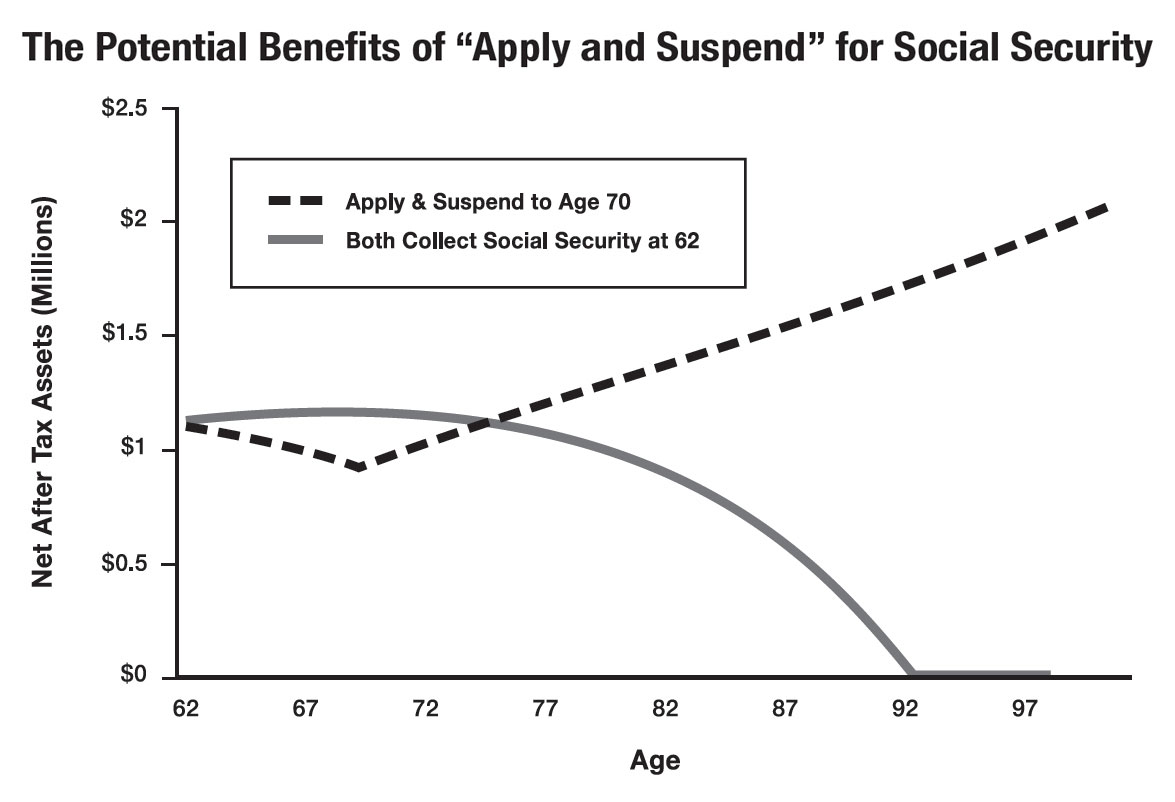
What’s the deadline for filing and suspending? Should I do it online or in person? What’s the difference between Apply and Suspend versus Restricted Applications? Should I take Social Security now or wait?
Confusion among retirees with the new Social Security rules
We’ve been getting a lot of phone calls about the impending changes in the Social Security rules. Before I tell you about some of those calls, and explain how real people like you are dealing with potentially confusing Social Security decisions, I wanted to give you a quick update on some important dates.
Deadline for File and Suspend (or Apply and Suspend) for Social Security
If you plan to file for your own benefits and then suspend them, April 29, 2016 is an important date. If you file and suspend by that deadline, your spouse, when eligible, can then file for and collect spousal benefits from Social Security while your own continue to grow by Delayed Retirement Credits (DRCs).
Applying for Social Security Online or In Person
Many of the people we’ve talked to are concerned because they can’t even get an appointment with their local Social Security office until well after the deadline One way to apply is to call your local Social Security office before April 29, 2016 and schedule an appointment for after the deadline. The act of scheduling the appointment creates what is called a protective filing date, a concept which is covered in detail in my blog post of April 13, 2016. As I said in that post, I’m a little nervous about relying on a protective filing date. I am encouraging my own clients who are eligible, to just file online by April 29, 2016. I’ve had several clients report back to me that they applied online, and thought that the process was fairly simple. If you want to apply online, please note that there is no specific form that you need to fill out, that is titled “Apply and Suspend”. When you get to the very bottom of your application, there is a comment box. You need to write a comment in the box and say something like “It is my intention to file for and then suspend my benefits. I do not want to receive any checks until I turn 70.” That’s all that is required, but you do need to spell out your intentions very clearly. Please be sure that you print a copy of your application for your own records.
Apply and Suspend Vs Restricted Applications
Are you confused about whether Applying and Suspending is the best option for you? It’s not the right answer for everyone. My blog post of April 8, 2016 covers some situations where it might do more harm than good. One of those includes scenarios where it is more beneficial for one of the spouses to file a Restricted Application. Some examples of how Restricted Applications can be beneficial are covered in my blog post of April 22, 2016.
Is it Better to Take Social Security Now or To Wait?
Are you concerned about suspending your benefits because you were planning on using the money to live on? If you have been accumulating money in IRAs and retirement plans, it might actually make more sense for you to spend that money first, and allow your Social Security benefits to grow. This idea is covered in my blog post of April 12, 2016. This particular strategy isn’t for everyone, and there are so many variables to consider that we have to go through a lot of calculations before we can make specific recommendations about it. Do you think there’s a possibility that it might make sense for you to spend your retirement money first? If so, you should apply for and suspend your Social Security benefits now assuming that it is the right technique for you. Although we can’t possibly do it by April 29, 2016, we’d be happy to have our team do the math for you to see how spending your retirement money first might benefit you. If we find that you’re better off to spend your Social Security money and leave your retirement plans untouched, then you can always unsuspend your benefit.
We’ve had many calls from people who have questions about Social Security. Please check back tomorrow, when I’ll discuss some more of the real-life situations readers are wrestling with.
—————————————————————————————————————————————–
Are you confused about how the Apply and Suspend strategies can benefit you? Please do not ask your local Social Security office for advice, because they can only present your options about government benefits! The decisions that you make about this affect far more than just your Social Security benefits, and could have unintended complications and/or repercussions if they are not made considering the big picture.
Getting your Social Security decision right is important, but it is even more important that you have the right strategies for all of your planning. To find out if your entire financial house is in order, fill out this pre-qualification form by clicking here to see if you qualify for a free consultation. Western PA residents only please.
Don’t delay. Go to www.paytaxeslater.com/ss to get your free digital copy of The Little Black Book of Social Security Secrets, and then talk to a professional about your options before it’s too late.


 The Apply and Suspend strategy will be eliminated on April 29, 2016, so you must act now to take advantage of it. For those of you who cannot use the Apply and Suspend technique, there is another way that you may be able to maximize your benefits, though, which involves filing a Restricted Application (also known as Claim Now, Claim More Later). The great news is that you can take advantage of this strategy until December 31, 2019, assuming that you were at least 62 years old as of December 31, 2015.
The Apply and Suspend strategy will be eliminated on April 29, 2016, so you must act now to take advantage of it. For those of you who cannot use the Apply and Suspend technique, there is another way that you may be able to maximize your benefits, though, which involves filing a Restricted Application (also known as Claim Now, Claim More Later). The great news is that you can take advantage of this strategy until December 31, 2019, assuming that you were at least 62 years old as of December 31, 2015.  Apply and Suspend works this way. You file an application for benefits at age 66 (or later) and then suspend them – meaning that you will not receive monthly checks. There’s good reason to consider doing this. For each year that your benefit remains suspended, it grows by 8 percent (up to a maximum of 32 percent), plus cost of living adjustments. When you finally begin collecting checks at age 70, they’re significantly higher than they would have been if you had begun collecting them at age 66 – and they stay that way for the rest of your life. If you change your mind and want to start receiving your checks after you’ve suspended them, you can do so at any time.
Apply and Suspend works this way. You file an application for benefits at age 66 (or later) and then suspend them – meaning that you will not receive monthly checks. There’s good reason to consider doing this. For each year that your benefit remains suspended, it grows by 8 percent (up to a maximum of 32 percent), plus cost of living adjustments. When you finally begin collecting checks at age 70, they’re significantly higher than they would have been if you had begun collecting them at age 66 – and they stay that way for the rest of your life. If you change your mind and want to start receiving your checks after you’ve suspended them, you can do so at any time.